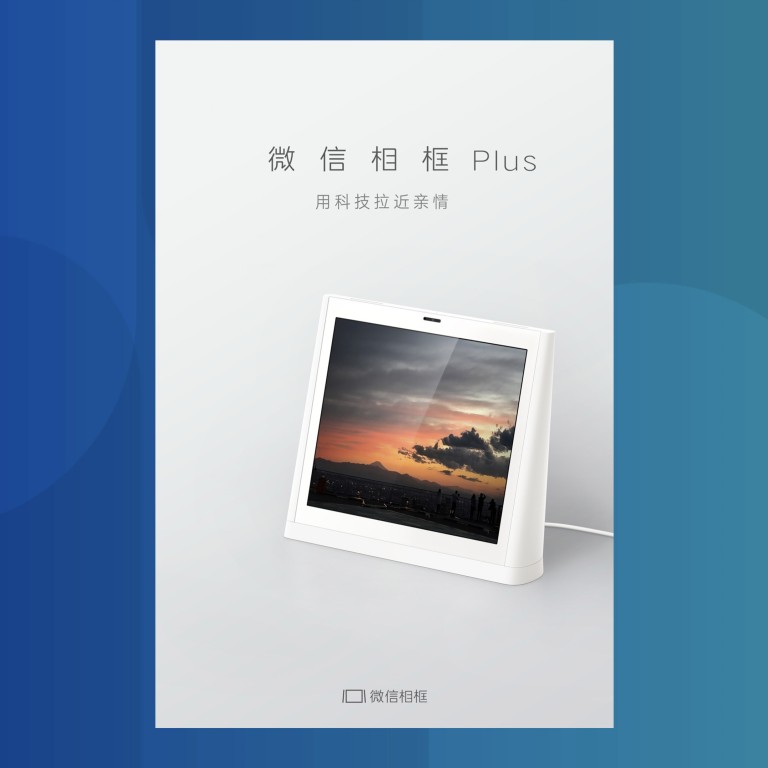
Tencent keeps trying to make hardware but nobody’s buying them
WeChat maker unveils its answer to the Amazon Echo Show, Google Home Hub and Facebook Portal
People know Tencent for its enormous gaming and social empire, but what you may not know is that Tencent also has a line of hardware.
You probably don’t know about it because nobody’s buying Tencent’s hardware.
Tencent, China’s social and entertainment giant

The funny thing is that Tencent’s latest stab at hardware bears a pretty decent resemblance to that frame. Smart displays are the new hotness, with Google, Amazon and Facebook all launching the evolution to the smart speaker this year.
Tencent’s answer is the DingDang smart display, which has an 8-inch screen and access to the company’s content, including Tencent Video and QQ music. It costs 699 yuan (US$101), same as Baidu’s smart display Xiaodu Zaijia.

Meet Baidu, China’s homegrown search engine
If DingDang fails to catch on, it won’t be the only piece of hardware from Tencent to be ignored.
Back in 2015, Tencent also made a wearable camera that looks like the Narrative Clip “life-logging” camera that was a brief hit at SXSW one year… but nobody really talks about Tencent’s camera anymore either.

Tencent also made a pair of glasses that look a lot like the Snap Spectacles. The glasses were launched only last month so it’s hard to say if it will one day take off... or sell as poorly as the product they’re based on, because Snap’s Spectacles didn’t do very well either.
Still, if the whole hardware thing doesn’t work out for Tencent, they can console themselves with their software strength: WeChat has over a billion users, after all.
Will China embrace Apple’s HomePod?
For more insights into China tech, sign up for our tech newsletters, subscribe to our Inside China Tech podcast, and download the comprehensive 2019 China Internet Report. Also roam China Tech City, an award-winning interactive digital map at our sister site Abacus.
For more insights into China tech, sign up for our tech newsletters, subscribe to our Inside China Tech podcast, and download the comprehensive 2019 China Internet Report. Also roam China Tech City, an award-winning interactive digital map at our sister site Abacus.

